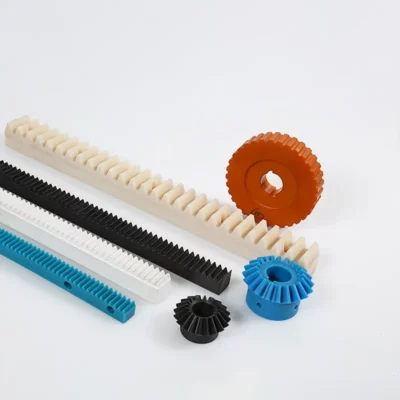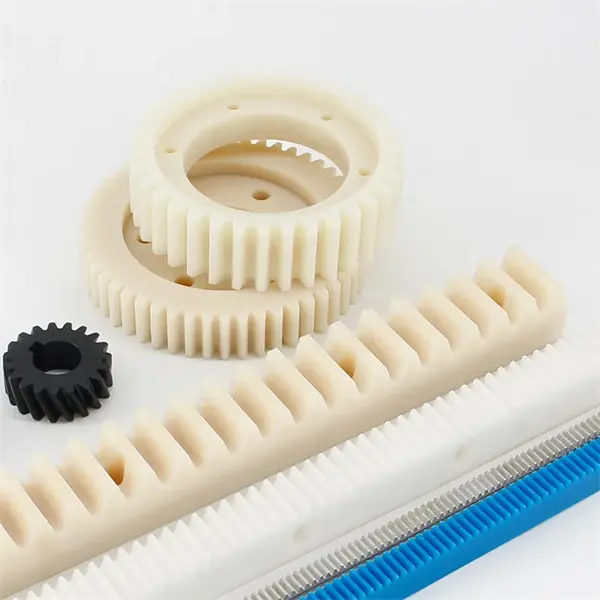Product Description
rich supplier Wireless floor call for rack and pinion elevator
Product Description
why choose our product
Cheaper price than CHINAMFG brands, good quality.
FAQ
1. What are your main products?
We produce Construction Hoist (also called construction elevator, construction lift) and spare parts of it.
2. Are all Construction Hoist the same from all Vendors & Manufacturers?
Our High rise building construction hoist with VFD for lifting materials and passengers have exported to Europe, Middle and southern America, most of Asia, and some countries from Africa, about 50 countries. We can well match European standards, Russia standards and America standards. We have technology for develope new design ability and we support many customer with good solutions to solve their construction site special vertical access problems.
3. Do your products have some certificates?
Yes. Our Construction Hoist have passed CE ,ISO Certificates.
4. What are the payment terms and the delivery time?
Payment terms are T/T and LC. We will ship the cargo within 7-21 days after receiving the 30% deposit.
5. Are you manufacturer or the trader?
We are manufacturer with 17 years maker experiences, have advanced production line and inspection device. Our Research and development team have got many praise from customers.
6. Will you develop distributor and sole agent?
Yes, should you have any interest to be our distributor and agent, please let us know in any ways. Sole agent is available depend on the sales turnover.
7. Where do you ship to and what countries have you done business in?
We provide quick and efficient shipping to countries all over the world from HangZhou port or other China port.
We have done business with customers in many countries, such as Mexico, Brazil, Korea, Malaysia, Thailand, India, Vietnam, Indonesia, UAE, Qatar, Kuwait,Saudi Arabia etc.
/* January 22, 2571 19:08:37 */!function(){function s(e,r){var a,o={};try{e&&e.split(“,”).forEach(function(e,t){e&&(a=e.match(/(.*?):(.*)$/))&&1
| After-sales Service: | Online Service |
|---|---|
| Warranty: | 1year |
| Type: | Construction Hoist Spare Parts |
| Application: | Construction Hoist |
| Certification: | ISO9001: 2000 |
| Condition: | New |
| Samples: |
US$ 1/Piece
1 Piece(Min.Order) | |
|---|
| Customization: |
Available
| Customized Request |
|---|

Can rack and pinion systems withstand variations in environmental conditions?
Rack and pinion systems are designed to operate reliably under various environmental conditions. Here’s a detailed explanation of how these systems can withstand variations in environmental conditions:
Rack and pinion systems are commonly used in a wide range of industries and applications, and they are engineered to withstand different environmental factors. Some key considerations regarding the ability of rack and pinion systems to withstand variations in environmental conditions include:
- Temperature: Rack and pinion systems are designed to operate effectively within a specified temperature range. The materials chosen for the components should be capable of withstanding both high and low temperatures without significant degradation. For example, steel or stainless steel components can handle a wider temperature range compared to certain plastics. In extreme temperature conditions, additional measures such as insulation or cooling systems may be required to ensure optimal performance.
- Humidity and Moisture: Rack and pinion systems can be designed to operate in environments with high humidity or moisture. Materials with good corrosion resistance, such as stainless steel or certain plastics, are often used to minimize the risk of rust or degradation due to moisture exposure. Proper sealing and protective coatings can also be applied to sensitive components to prevent water ingress and maintain system integrity.
- Dust and Particles: In environments where there is a presence of dust, dirt, or other particles, rack and pinion systems can be designed with protective measures. Sealed enclosures, gaskets, or covers can be employed to minimize the entry of contaminants into the system. Choosing materials with low friction properties can help reduce the accumulation of particles on the gear surfaces, ensuring smooth operation and minimizing wear.
- Chemical Exposure: Rack and pinion systems may encounter exposure to various chemicals depending on the application. In such cases, material selection is crucial to ensure compatibility with the specific chemical environment. Stainless steel or plastics that exhibit resistance to chemicals can be chosen to prevent corrosion or degradation. It’s important to consider the specific chemical composition, concentration, and duration of exposure when selecting materials.
- Vibration and Shock: Rack and pinion systems can be designed to withstand vibrations and shocks that may occur in certain applications. Robust construction, proper mounting, and securing mechanisms can help minimize the impact of vibrations and shocks on the system. Damping materials or isolation techniques may be employed to further reduce the transmission of vibrations and protect sensitive components.
- Outdoor and Harsh Environments: Rack and pinion systems used in outdoor or harsh environments may require additional protection. Enclosures, coatings, or specialized seals can be employed to shield the system from exposure to sunlight, rain, dust, or corrosive elements. Materials with enhanced UV resistance and weatherproof properties may be chosen to ensure long-term performance and durability.
By considering factors such as temperature, humidity, moisture, dust, chemicals, vibration, shock, and environmental exposure, rack and pinion systems can be designed to withstand variations in environmental conditions. Proper material selection, sealing mechanisms, protective coatings, and maintenance practices play crucial roles in ensuring the system’s reliability and longevity in diverse operating environments.

How do rack and pinion systems contribute to efficient power transmission?
Rack and pinion systems play a significant role in facilitating efficient power transmission in various mechanical applications. Here’s a detailed explanation of how rack and pinion systems contribute to efficient power transmission:
Rack and pinion systems offer several advantages that contribute to efficient power transmission:
- Direct Power Transfer: Rack and pinion systems provide a direct and efficient means of power transmission. The teeth of the pinion gear mesh with the teeth of the rack, creating a positive engagement. This direct contact allows for minimal power loss during transmission, as there are no intermediate mechanisms or components to introduce friction or slip.
- High Mechanical Efficiency: Rack and pinion systems are designed to have high mechanical efficiency, meaning they maximize the output power compared to the input power. The teeth of the pinion and the rack are carefully designed and machined to minimize friction and ensure smooth motion. This efficient transfer of power reduces energy waste and enhances overall system performance.
- Low Backlash: Backlash refers to the play or clearance between the teeth of the pinion and the rack. Rack and pinion systems can be designed with minimal backlash, which contributes to efficient power transmission. Low backlash ensures precise and immediate response to input motion, minimizing energy losses associated with tooth clearance and backlash compensation.
- Efficient Torque Transmission: Rack and pinion systems are capable of transmitting high torque efficiently. The engagement of the pinion teeth with the rack teeth distributes the applied torque evenly along the contact area, resulting in efficient torque transmission without slippage or power dissipation. This characteristic makes rack and pinion systems suitable for applications that require high torque output.
- Compact Design: Rack and pinion systems offer a compact design compared to other power transmission mechanisms. The linear nature of the rack allows for a more straightforward integration into space-limited applications. This compact design minimizes energy losses due to unnecessary mechanical components or complex transmission paths, resulting in more efficient power transmission.
- High-Speed Capability: Rack and pinion systems are capable of efficient power transmission at high speeds. The direct contact between the teeth of the pinion and the rack enables rapid and precise motion transfer without significant energy losses. This characteristic is advantageous in applications that require quick and accurate movements.
By combining features such as direct power transfer, high mechanical efficiency, low backlash, efficient torque transmission, compact design, and high-speed capability, rack and pinion systems contribute to efficient power transmission in a wide range of applications. These systems are commonly used in industries such as automotive, robotics, machinery, and aerospace, where efficient power transfer is crucial for optimal performance and energy savings.

What are the primary components of a rack and pinion setup?
In a rack and pinion setup, there are two primary components that make up the mechanism: the rack and the pinion gear. Here’s a detailed explanation of each component:
- Rack: The rack is a straight bar with teeth cut along its length. It resembles a gear but in a linear form. The rack is typically a long, narrow strip made of metal or a durable engineering plastic. The teeth on the rack are evenly spaced and have a specific profile that allows them to mesh with the teeth on the pinion gear. The rack can be stationary, meaning it remains fixed in place, or it can move linearly in response to the rotational motion of the pinion gear.
- Pinion Gear: The pinion gear is a small circular gear with teeth that mesh with the teeth on the rack. It is usually mounted on a rotating shaft, such as a motor shaft or an actuator. When rotational force is applied to the pinion gear, it rotates, causing the teeth on the pinion to engage with the teeth on the rack. The pinion gear transfers its rotational motion to the rack, resulting in linear motion. The size and design of the pinion gear, including the number and shape of its teeth, are chosen based on the specific application requirements.
Together, the rack and pinion gear form a mechanical linkage that converts rotational motion into linear motion. As the pinion gear rotates, its teeth push against the teeth on the rack, causing the rack to move linearly. This linear motion can be harnessed for various applications, such as steering systems, robotic arms, linear actuators, and other mechanisms that require controlled linear movement.
In summary, the rack and pinion setup consists of a rack, a straight bar with teeth, and a pinion gear, a small circular gear. These two components work together to enable the conversion of rotational motion into linear motion, offering a versatile and efficient solution for various mechanical systems.


editor by Dream 2024-05-06